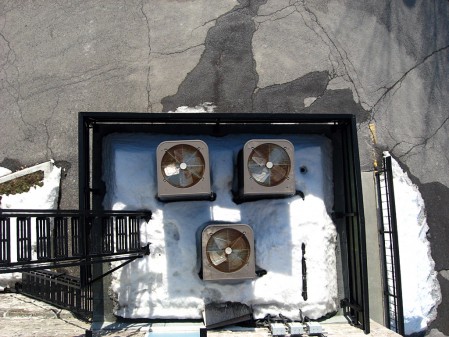Joseph Romm’s Hell and High Water: Global Warming – the Solution and the Politics – and What We Should Do might be fairly described as an American version of George Monbiot’s Heat. It describes much less intrusive means for responding to the threat of climate change, as well as being more tailored to American politics. It is also less ambitious that Monbiot’s work, since it aims at the stabilization of atmospheric concentrations of greenhouse gasses (GHGs) below 550 parts per million (ppm) rather than 450.
The book is basically divided into two sections: one of which describes the nature and extent of the threat posed by climate change and one talking about solutions. The book is very explicitly focused on what climate change will do to Americans. Romm argues that too much coverage has focused on effects in poor countries, leading Americans to think the impact of climate change on their lives will be minimal.
Romm talks a great deal about how groups opposed to GHG regulation have created and funded a group of irresponsible ‘experts’ trying to convince the general public that major disagreement still exists about the reality and probable impact of climate change. He is very critical of the media, particularly for giving equal attention to the conclusions of a few oil-funded crackpots, compared with those of the enormous majority of scientists and all major scientific assessments.
I have some quibbles with some of Romm’s technological recommendations. I think he is a bit overconfident about the rapidity with which carbon capture and storage and cellulosic ethanol might be deployed. That said, the vast majority of what he says is correct, well defended, and similar to the thinking of others who have considered the questions seriously.
One notable omission from the book is emissions associated with air travel. At no point are they mentioned, either as a problem or an area where policy could yield improvements. As Monbiot effectively highlights, emissions from air travel are among the toughest to address, not least because lots of well-off people who consider themselves environmentalists and support good environmental policies nonetheless want to be able to jet off to South Africa or New Zealand.
Overall, Romm’s book is informative and accessible. He does a good job of bringing the issue home for Americans – de-emphasizing issues like the preservation of nature and international fairness – and emphasizing why they, personally, should be worried. Certainly, the kind of climatic impacts projected by the IPCC for 2030 or so are enough to make any reasonable person extremely nervous. He is right to say that, in a world where GHG concentrations are 650 ppm or more, climate change will be the issue being dealt with by all governments. Equally, he is right to point out that concentrations of that magnitude have a very serious risk of pushing us into a self-reinforcing cycle producing temperature increases of more than 5˚C globally and sea level increases of 25 metres or more. Hell and high water, indeed.




